Sherry Holmes: Framing the Trades in a New Way
Women represent only 4.5 per cent of the skilled trades’ labour force. Sherry Holmes, a two-time Women Build Ambassador for Habitat for Humanity GTA, is an influencer who is working to change this statistic.
Interviewed By Victoria Scott
Photography By Carlos A. Pinto
Sherry Holmes is a force in her own right. As an expert renovator, framer and exceptional tiler, this two-time (2017 and 2018) Women Build Ambassador for Habitat for Humanity Greater Toronto Area (Habitat GTA), has made a name for herself in the contracting world. On top of that (if the name didn’t give it away), she is the daughter of Mike Holmes, professional contractor, influencer and reality television host of shows such as Holmes on Homes and Holmes: Next Generation (2018). In the current show, both Sherry and her brother, Mike Jr., share their ideas and viewpoints with their dad, in order to rescue homeowners from DIY projects gone awry. Though this is her first major foray into the spotlight, she has been working in this industry for a decade.
Holmes spent a lot of her childhood hanging around job sites with her dad. “As I got older, I helped my dad around the house, and we’d do a lot of little things and work together. He tried to get me to join his crew a few times, but I never actually considered the trades as a career path,” Holmes says. “Years ago, the trades had a bad name. But my dad taught me so much, and [he] was really the driving force that got me interested in pursuing a career in the trades. Without his influence and direction, I definitely would not have done it.”
There are many things that Holmes’s dad has helped her with, including the skill of measuring. “I failed mathematics in school,” Holmes says with a laugh. “So my dad taught me how to measure things.”
When Holmes was in high school, she wanted to take a tech course and try some hands-on construction work. But in order to do that, she had to take a half semester of home economics, which entailed learning how to cook and run a household. “I even had an auto-body mechanic teacher in my high school tell me that he wanted me in his course, but I didn’t take it because I was too afraid. I would have been the only girl in the class,” she says.
It is a situation with a lot of irony attached. Recently, Holmes worked with five women in Etobicoke, Ont., at an all-female auto-body repair shop, sanding, fixing and painting. “And I don’t know a thing about cars,” she says. “It is that women are no longer afraid to say what they do for a living (vis-à-vis the trades), which has been a huge contributing factor toward acceptance. Women are saying, ‘This is what I want to do, so don’t judge me on it.’ Unfortunately, people are judgmental, but it is definitely getting better.”
“Women see me involved in the trades, and they realize that they can do it, too. One woman can create an army of women” — Sherry Holmes
Starting out in the trades, Holmes faced some challenges, including the fact that men tended to dismiss her as just a young girl running around the job site. “When you get to the job site, you may not know what you’re doing, but it’s the way you present, the way that you work, that matters,” Holmes says. “And certainly, huge changes have been made as far as accepting women into the trades. I’ve met women plumbers, electricians and welders; I believe that women are really coming into their own.”
Although she had been working alongside her dad for years, Holmes’s journey into this industry was kick-started 10 years ago, when she was 21, after she joined her dad and his team in New Orleans to build a house in the lower ninth ward for one of the victims of Hurricane Katrina. The whole experience was filmed and became the Gemini award-winning show Holmes in New Orleans. “My dad and one of the vice-presidents sat me down and told me that this was my chance to help another family, to experience what the family was going through, to see everything the family had lost and, in the end, to make a difference in someone’s life,” Holmes says. “I was the only girl on the [job] site, working with a bunch of men, and I was scared to death. I did not want to embarrass myself. When I saw the look on some of the people’s faces we had helped, and [I] realized that we were able to give them something that they couldn’t have had without our help, I was hooked. I think I lost about 15 pounds in sweat in two months. And by the time we were finished, some of the other crews tried to poach me away from my dad.”
Holmes’s role on Holmes: Next Generation has been a positive influence on both women and young people. In fact, over the last few years, Holmes has realized that her voice is being heard, and her visible role as a tradeswoman is making a difference for women. Often, when she is working at home shows, Holmes is approached by women both asking for help and advice, and by women who show her their certificates and achievements. “Women see me involved in the trades, and they realize that they can do it, too,” Holmes says. “One woman can create an army of women.”
And while learning the trades can be difficult for both men and women, being on the job site does have its own particular set of challenges for women. Initially, when Holmes was on-site, she would question if she belonged there, or if she was being judged by her male peers. However, instead of being intimidated, Holmes’s approach was to work twice as hard, to dispel any doubts. “We need to build respect for ourselves,” she says. “As women, we need to put our heads down and do everything we can to show that we are willing to learn. If someone thinks I can’t do it — look out — and watch me do it better than that person can. If you are too afraid to try things, it is really going to stall your career.”
Women are a particularly great fit for the trades, Holmes believes, because they are detail oriented and sharp with tasks such as trim work. “Women tend to like things to look perfect,” she says.
Finding a mentor, whether it be family, someone involved in the trades or a guidance counsellor, is a good starting point for women who want to pursue a career in the trades. An understanding of interests, capabilities and skills is key to understanding what competencies are the best match for each trade. “Lots of people are willing to mentor and work with youth and women,” Holmes says. “It’s time for women to just do it.”
Rhonda Barnet, president and COO, Steelworks Design, as well as chair, National Board, Canadian Manufacturers & Exporters (CME), states that while women comprise 48 per cent of the labour force, they represent only 4.5 per cent of the skilled trades’ labour force. In the manufacturing sector, women make up 28 per cent of the sector, a percentage that has remained flat since the 1980s.1
Barnet is a science, technology, engineering and mathematics (STEM) graduate. She holds a bachelor of science in mathematics and computer science from Trent University. Barnet’s career as a mathematical analyst is one held by less than five per cent of women in Canada. “In the past, women were not going into the trades because of the culture and society’s perception of what the jobs entailed — basically, that those jobs were for men,” she says.
Women and STEM: Bridging the Divide, released by TD Economics in September 2017, focuses on how far women have come in the STEM fields. Report findings include the fact that one in five people graduating from a university engineering program is a woman (on par with statistics from 10 years ago). And one in four people graduating with computer science and math degrees is a woman (a statistic that is lower than 20 years ago).
In order to change these negative and deeply dated perceptions around what was once a chauvinistic culture in the manufacturing sector, CME has launched several initiatives such as Open Doors – Youth Awareness Program, a project that introduces young people and women to the seismic changes that have taken place in manufacturing, including career options and job diversity. CME is also running a fall campaign titled
We’re In, with the goal of increasing the number of manufacturing jobs that women hold by five per cent.
“I believe that women are really coming into their own”
Learning the fundamentals of the trades before apprenticing in the field is an important leg-up for those seeking paid apprenticeships. In 2015, 66 women (4.3 per cent) enrolled as machinists, versus 1,545 men. In the sheet metal trade, 54 women (3.7 per cent) were registered, versus 1,476 men. Pre-apprenticeship programs, offered at colleges such as Skilled Trades College (in Vaughan and Mississauga, Ont.), provide hands-on training in a simulated construction environment. Tony Martella, campus dean of Skilled Trades College, Vaughan Campus, states that the college had considered running women-only trades classes. “But women told us that they did not want to be in a class of all women,” Martella says. “They want to learn in a real-time environment.” Over the last three years, Martella estimates that out of 800 students who attended the college, approximately 12–15 were women.
Stephanie Brown, who went through the 12-week electrician pre-apprenticeship course at Skills Trade College, is now in her second year of a five-year electrical apprenticeship. At the college, Brown was one of three girls in a class of 14. “The first day of class might have been a shock for the guys, to see not just one girl, but three of us,” she says. “I was definitely intimidated that first day, shaking in my boots. But the teacher was fantastic.”
And while the men in the class might have been a bit skeptical at first, Brown quickly dispelled any negativity by showing everyone exactly what she could do. “I poured myself into it,” she says. “I came home every day, read the electrical code book and gave it my all. Once my male peers saw that I was kicking their butts, they thought they’d better step it up. It’s almost like we have to jump over bigger hurdles because we are women.”
Brown, who graduated at the top of her class, now works for TAM Electric, doing electrical rough-in and finishing work at a large subdivision job site in Oshawa, Ont. “I studied photography, as well as business, at college, but it wasn’t for me,” she says. “I did not want to sit at a desk all day; it was not mentally or physically stimulating enough for me. I picked electrical because it’s a very technical trade with a lot of math involved, which I am good at.”
Brown advises women who are considering a career in the trades not to be afraid. “It is not just a man’s world; we can absolutely do this, too,” she says. “Women can bring a different angle — a different perspective — to the job site.”
Holmes, Barnet, Brown and Martella concur that perceptions around careers in manufacturing and skilled trades have done a 180. Not only are women being welcomed into the manufacturing and trades sectors, but they are also actively being recruited to apply their much-needed and highly valued skills, talents and intuitive viewpoints.
CME held the first (of a planned annual event) Women in Manufacturing (WIM) Success Forum on International Women’s Day, March 8, 2018.2
The forum’s intent is to bridge the gender gap in the manufacturing labour force. “Diversity in the manufacturing workforce is critical to the strength of the sector,” Barnet says. “Manufacturing offers lucrative careers for women, but only a small proportion of women (less than six per cent) choose that path.” The 2018 forum was sold out, at 75 attendees. The 2019 WIM goal is to attract 700 attendees.
“It is time to move the dial,” Barnet says. “We need and want more people coming through our doors.”
Holmes works with organizations such as Skills Canada, supporting events that include the National Skilled Trades and Technology Week. The event’s purpose is to create awareness, for both men and women, around the viable career options in the skilled trades and technology areas across Canada.
With the intent of changing perceptions around the trades industry, Skilled Trades conducted a Skilled Trades and Apprentice Awareness and Perception Study.3 The study addressed the need to change negative perceptions and promote skilled trades as a first career to young Canadians.
“Things have changed dramatically,” Barnet says. “Jobs in the trades are now collaborative and technologically advanced. Wages are on par, especially in the skilled trades and STEM careers. There are very strict pay scales, which dissipate gender bias and wage gaps. It is a collaborative environment for both genders.”
Holmes agrees that there is now much more opportunity for women in the skilled trades sector. “Women working in the trades are making a significant difference in gender equality, as careers in the trades become more and more accessible to them,” she says. “My advice, overall, is to just make sure you love what you do, and you will never work a day in your life. Always be passionate and thankful, and work as hard as you can. Staying stimulated and learning is really important,” she says. “My dad told me that happiness is a choice, and I think that’s true about anything in life. We make our own decisions around being a better person and being happy. If we bring that to the workplace, it makes a huge difference. We need people in the trades, and that includes women.”
From Day 1, the most important thing that Holmes learned is that the harder she worked, the more she learned what she was good at. Instead of taking lunches, Holmes worked — and worked and worked. “I was afraid people would judge me, so I worked as hard as I could,” she says. “It is still my mindset today. My career is a choice, and as a part of that, I want to be able to respect myself at the end of every day.”
With the baby boomers in the throes of retiring, there is going to be a huge deficiency in skilled trades. Holmes stresses the importance of getting both youth and women involved and educating them on the fact that the skilled trades are viable career options. “Old perceptions are no longer the norm,” Holmes says. “I think that the ignorance and perceptions around the trades stems from old Hollywood images, things like plumber’s crack. There used to be a lot of judgment around being in the trades, (that is, no education required), but we are working hard on changing that perception right across the board.”
While Holmes says that she used to be automatically judged for being a tradesperson, she now sees a sea change happening. And while she did not initially think that she was representing women as a whole, Holmes now realizes that she has to take responsibility, so that tradespeople, regardless of their gender, have someone to identify with. “The more you talk about your experiences, the more people engage. It does make a difference,” she says. “People need someone to look to, to identify with. I want to help people better themselves. If someone wants to work in the trades, I am thrilled to help them. My advice to aspiring tradespeople is to be open-minded, to try everything. Keep pushing, keep trying.”
Holmes loves to travel and has Chile, the Philippines and Malta on her bucket list. “I like to experience things that are off the beaten path,” she says.
This philosophy is an apt metaphor for Holmes’s life, which she lives with gusto, passion and the courage to try new things.
www.diynetwork.com
www.instagram.com/sherryholmes
Sources: 1. Global News 2. CME/MEC 3. CANADIAN APPRENTICESHIP FORUM










































































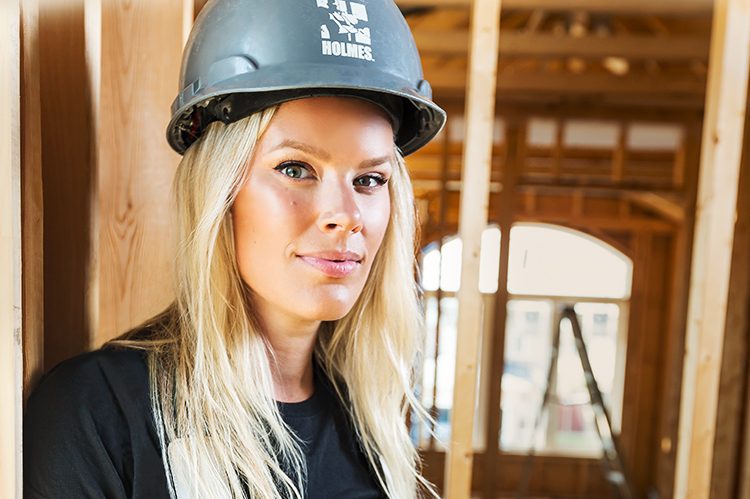
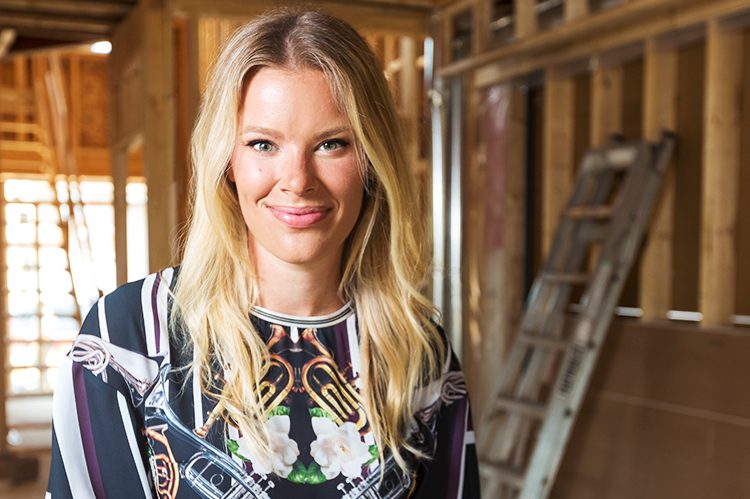

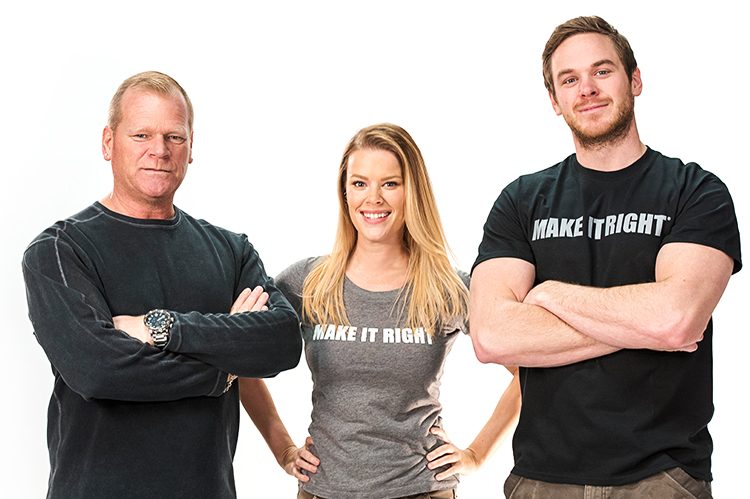
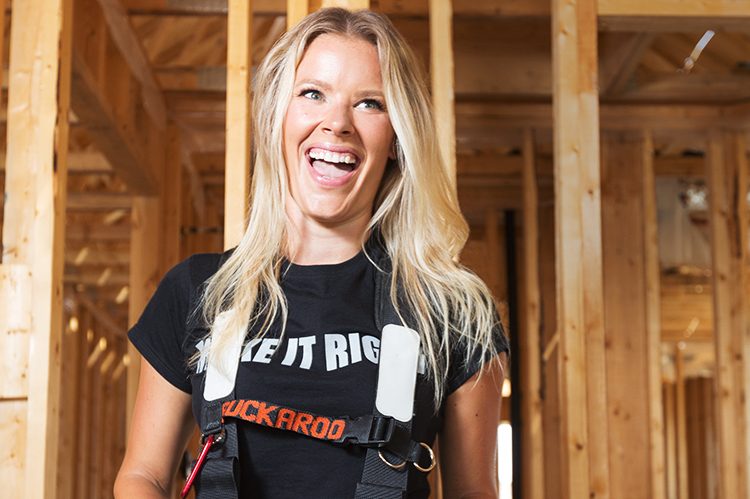
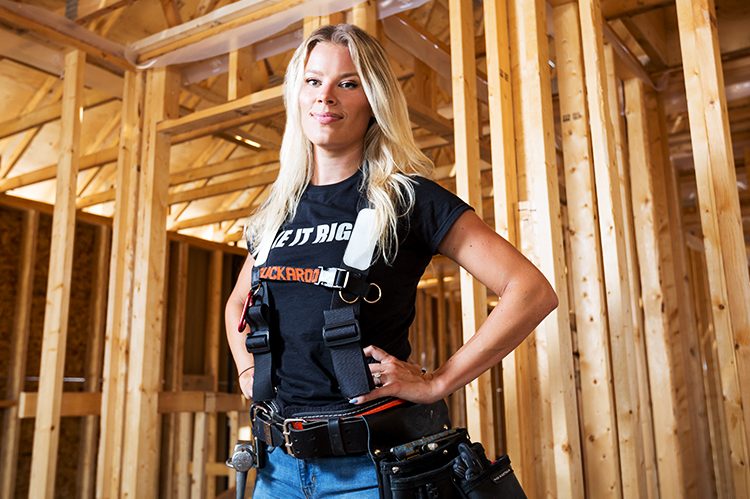








No Comment